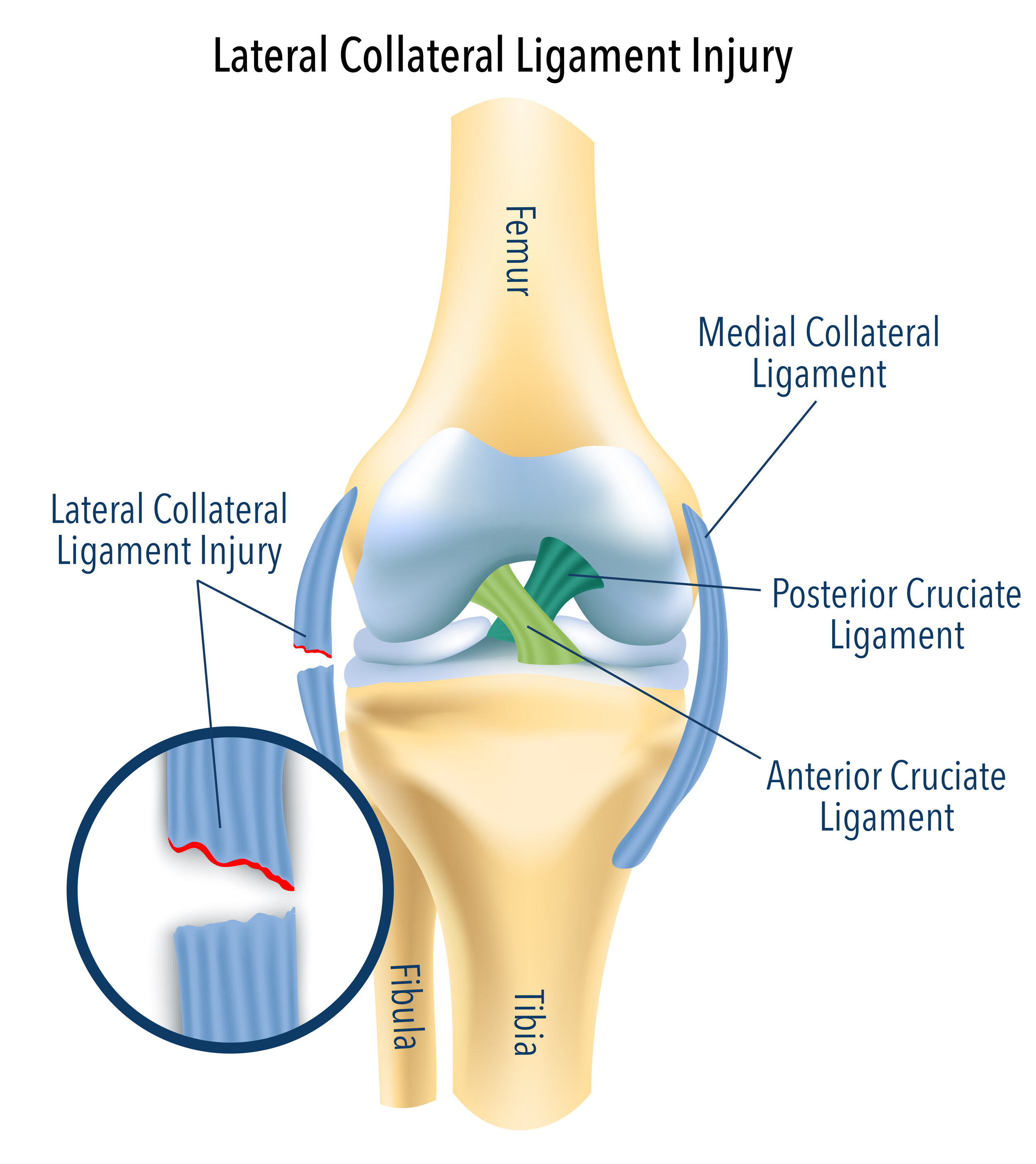Lateral Collateral Ligament Injury
What is a lateral collateral ligament injury?
The collateral ligaments are on the sides of your knee. The lateral collateral ligament is found on the outside of the knee, and the medial collateral ligament is on the inside of the knee.
These ligaments help prevent abnormal sideways motion of the knee. Although these ligaments are strong, if the knee sustains a significant sideways force from direct trauma or during activity, it may injure these ligaments.
Lateral collateral ligament injuries are sometimes associated with injuries to other structures on the outside of the knee (posterolateral corner injury), and it is important to check for this during the clinical examination.
An injury to the lateral collateral ligament is graded by its severity:
Grade 1 sprain: There is mild damage to the ligament, which becomes slightly stretched. However, it will still keep the knee joint stable.
Grade 2 sprain: There is moderate damage to the ligament, which remains intact but becomes loose. The ligament is partially torn.
Grade 3 tear: There is severe damage to the ligament, which is completely torn. This will make the knee joint unstable.
What are the symptoms of lateral collateral ligament injury?
This injury will present as pain and swelling over the outside of the knee. The knee may feel like it gives way during activity.
Mr Pai will examine your knee to determine the degree of instability and may request an X-ray and MRI scan to assess the nature of the injury.
How do you treat a lateral collateral ligament injury?
Most lateral collateral ligament injuries are treated non-surgically. Depending on the grade of the injury, you may require a brace and crutches for a period of time.
What does surgery for a lateral collateral ligament injury involve?
Treatment of an unstable lateral collateral ligament tear involves reconstruction of the ligament using one of your hamstrings as a graft. Isolated repair of the torn ligament is likely to fail.
The alignment of your knee will be assessed prior to surgery. If you have knees that are bowed inwards (varus), then the reconstruction has a higher likelihood of failure. In this situation, a concurrent realignment procedure (osteotomy) will need to be performed to correct the alignment to neutral.

